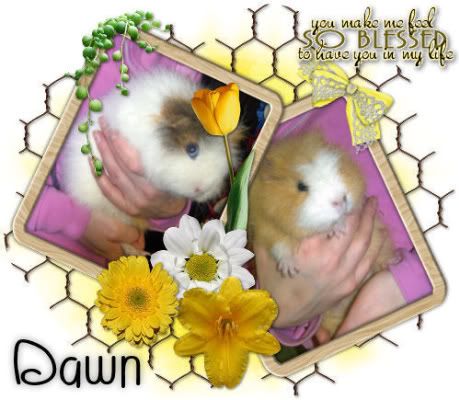Post by Dawn - Admin on Sept 15, 2006 10:27:24 GMT
Anatomy
The contrast with other rodents the guinea pig has a very long colon, which accounts for 60% of the length of it's intestines. It also has a large caecum for digestion of cellulose, a feature which is typical to a herbivore. The wall of this organ is thin and it contains numerous lateral pouches which further increase it's capacity, with the result that the caecum is able to contain up to 65% of the gastrointestinal contents at any one time.
The stomach is non-glandular and the spleen is closely associated to it and is relatively broad. The female's spleen is significantly larger and heavier than that of the male.
Physiology
The intestinal tract contains large numbers of non-pathogenic protozoa, and Candida albicans is also present in the normal gut flora. The bacterial component of normal gastrointestinal flora is made up of a majority of gram-positive anaerobic cocci and Lactobacilli. Gram-negative Escherichia coli and Clostridia are absent from the normal flora or are present only in very small amounts.
The process of digestion may take anything from 5 hours to several days: the average gastrointestinal transit time is between 13 and 30 hours.
The guinea pig typical of a herbivore, spends a large proportion of each day eating. The average food consumption is 6g/110g of body weight, and up to 75% of food intake may be in the form of concentrates. The average water intake is 85ml for an adult, but this figure is very variable depending upon the amount of moist green food consumed.
Guinea Pigs are very fastidious in their eating habits and do not accommodate alterations easily. If the consumption of their diet is altered suddenly they may just stop eating and starve to death. Similarly if their water supply is changed from a bowl to a water bottle or vise versa they may suffer deprivation until they adjust to using the new source of water.
Coprophagia
The eating of its own droppings is a normal part of the digestive process. The guinea pig selectively eats the smaller moist droppings taking them directly from the anus. these lighter and softer faeces are caecal faeces and contain the important B-complex vitamins which are formed by bacterial flora in the caecum. By re-digesting these faeces the guinea pig satisfies its need for b vitamins. Young guinea pigs will also be seen eating their mother's droppings. In this way the young guinea pigs populate their guts with the balanced bacterial flora before weaning.
The contrast with other rodents the guinea pig has a very long colon, which accounts for 60% of the length of it's intestines. It also has a large caecum for digestion of cellulose, a feature which is typical to a herbivore. The wall of this organ is thin and it contains numerous lateral pouches which further increase it's capacity, with the result that the caecum is able to contain up to 65% of the gastrointestinal contents at any one time.
The stomach is non-glandular and the spleen is closely associated to it and is relatively broad. The female's spleen is significantly larger and heavier than that of the male.
Physiology
The intestinal tract contains large numbers of non-pathogenic protozoa, and Candida albicans is also present in the normal gut flora. The bacterial component of normal gastrointestinal flora is made up of a majority of gram-positive anaerobic cocci and Lactobacilli. Gram-negative Escherichia coli and Clostridia are absent from the normal flora or are present only in very small amounts.
The process of digestion may take anything from 5 hours to several days: the average gastrointestinal transit time is between 13 and 30 hours.
The guinea pig typical of a herbivore, spends a large proportion of each day eating. The average food consumption is 6g/110g of body weight, and up to 75% of food intake may be in the form of concentrates. The average water intake is 85ml for an adult, but this figure is very variable depending upon the amount of moist green food consumed.
Guinea Pigs are very fastidious in their eating habits and do not accommodate alterations easily. If the consumption of their diet is altered suddenly they may just stop eating and starve to death. Similarly if their water supply is changed from a bowl to a water bottle or vise versa they may suffer deprivation until they adjust to using the new source of water.
Coprophagia
The eating of its own droppings is a normal part of the digestive process. The guinea pig selectively eats the smaller moist droppings taking them directly from the anus. these lighter and softer faeces are caecal faeces and contain the important B-complex vitamins which are formed by bacterial flora in the caecum. By re-digesting these faeces the guinea pig satisfies its need for b vitamins. Young guinea pigs will also be seen eating their mother's droppings. In this way the young guinea pigs populate their guts with the balanced bacterial flora before weaning.





